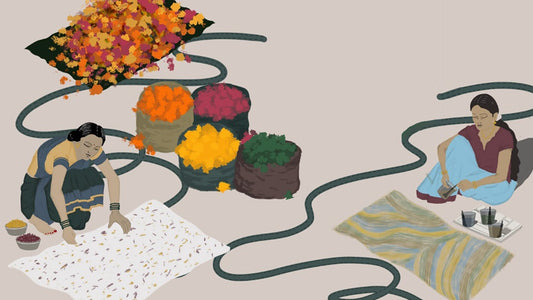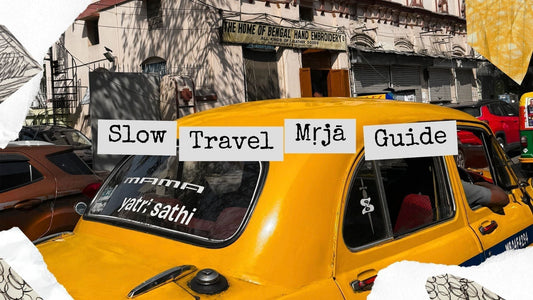The internet loves a good feud. Today’s battleground? Artists vs AI. One side says the soul of creativity is being mechanized. The other champions limitless innovation and disruption. The discourse is loud, polarizing—and familiar. But what if we didn’t have to pick a side?
At Mṛjā Collective, we don’t. We come from both worlds—code and craft, logic and lore—and our work as a slow fashion aggregator sits at the intersection of storytelling, sustainability, and systems thinking.
Maybe that’s why we find ourselves returning, time and again, to Princess Mononoke. In Hayao Miyazaki’s masterpiece, the battle isn’t between good and evil—it’s between forces that are both deeply human. San, fierce and untamed, fights for the forest with her whole being. Lady Eboshi, visionary and pragmatic, builds a society for the marginalized—even if it comes at nature’s expense.
And then there’s Ashitaka. Not a savior, not a side-taker, but a seeker of balance. He walks between both worlds—listening, understanding, and choosing to act not out of allegiance, but out of hope. “What I want is for the humans and the forest to live in peace,” he says. It’s not just a line—it’s a blueprint.
We see the same blueprint in the world of fashion. For too long, the industry has operated like Iron Town—driven by speed, extraction, and excess. Over 92 million tonnes of textile waste are generated annually. Fast fashion pushes out up to 52 micro-seasons a year, reducing creativity to trend cycles and craftsmanship to cost.
But like San, there are voices rising to protect what’s sacred—craft, culture, and the earth itself. And like Ashitaka, we try to walk the middle path. At Mṛjā, we attempt the harder thing: to make clothes with nature, not against it. To honour slowness. To co-create with artisans. To build something that lasts beyond a season.
In the broader conversation, AI and artists are not enemies either. They’re simply two powerful forces—each with their own logic, each with their own poetry. And perhaps, like San and Eboshi, they both believe they’re fighting for a better future.
Ashitaka didn’t try to erase either side. He accepted them for who they were, even when they couldn’t accept each other. He acted not to win, but to preserve the spirit of something far greater.
AI and artists will need each other.
Designers and data, weavers and web builders—we all have a part to play. Not in silos, but in symphony.
Because the most beautiful things are never made in isolation—they’re co-created.




